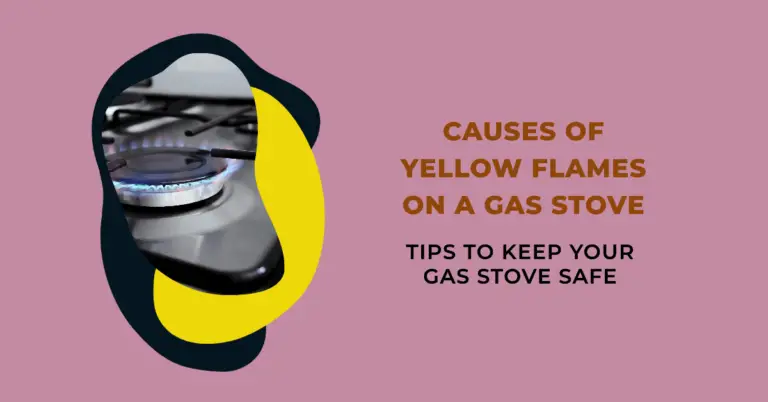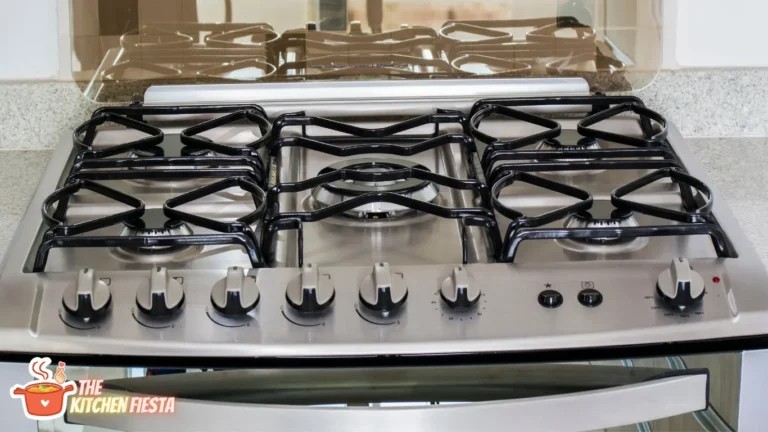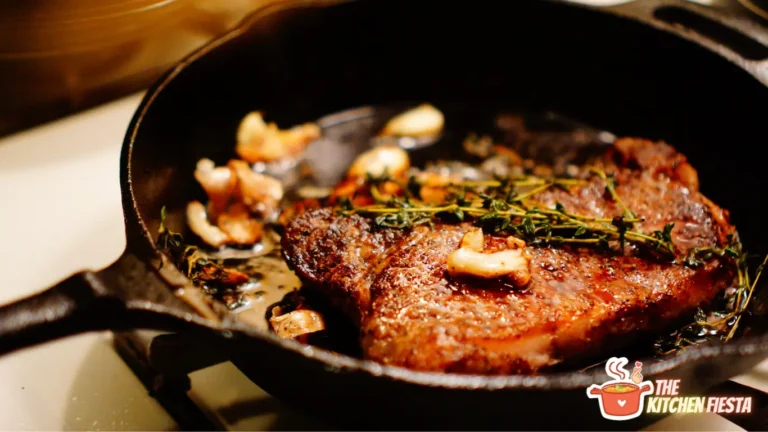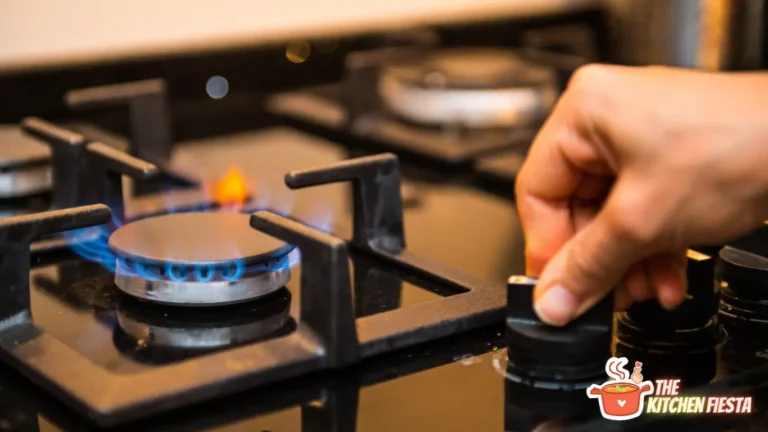Is a Yellow Flame on Your Gas Stove Dangerous? Here’s What You Need to Know
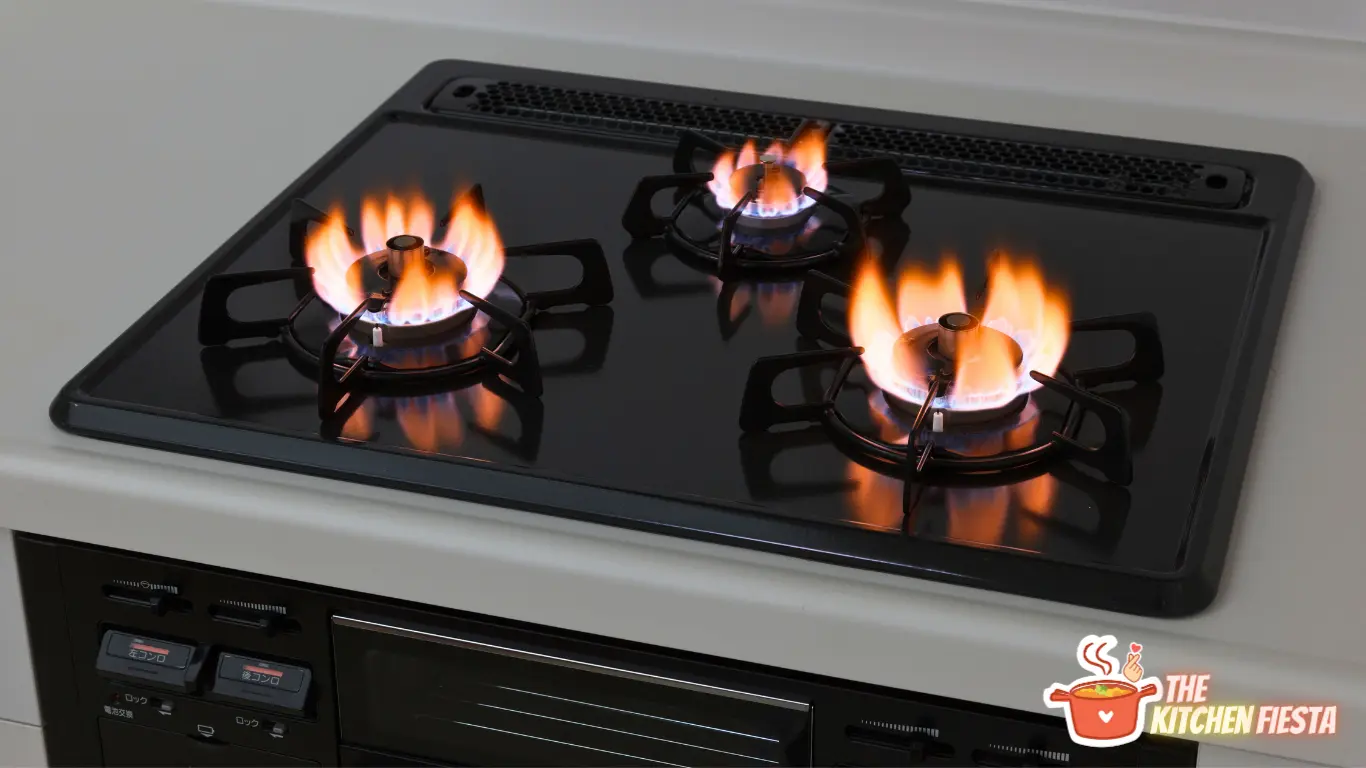
A yellow flame on a gas stove can be a cause for concern. While most gas stoves have blue flames, a yellow flame indicates incomplete combustion and can release carbon monoxide. Carbon monoxide is a colorless, odorless gas that can be deadly if inhaled in high concentrations. Therefore, it is essential to understand the causes of a yellow flame on a gas stove and take the necessary precautions to prevent potential hazards.
There are several reasons why a gas stove might have a yellow flame. In most cases, it is due to partial combustion, which occurs with insufficient oxygen. A blockage in the burner portholes or ignitor can cause this. A clogged pilot light adjustment can also lead to a yellow flame. It is crucial to address these issues promptly to prevent any potential hazards. In this article, we will explore the causes of a yellow flame on a gas stove and discuss the steps you can take to fix the issue and ensure your gas stove is safe to use.
Understanding Yellow Flame on Gas Stove
A gas stove is an essential appliance in modern kitchens. It provides instant heat and precise temperature control, making cooking more convenient and efficient. However, gas stoves also pose potential hazards, and staying informed about them is essential.
A gas stove running on propane or methane typically gives you a blue flame. If you notice a yellow flame or a blue flame with yellow tips, it could indicate a problem. Yellow love is not necessarily dangerous, but it could be a sign of incomplete combustion, which can produce carbon monoxide, a toxic gas.
There are several possible causes of a yellow flame on a gas stove, including:
- Dirty or clogged burners: Dirt, grease, and food particles can block the burner ports, obstructing the flow of gas and air. This can cause incomplete combustion and a yellow flame.
- Low gas pressure: If the gas pressure is too low, the stove may not get enough gas to burn efficiently, resulting in a yellow flame.
- Incorrect air mixture: The air mixture in the burner may need to be more accurate, leading to incomplete combustion and a yellow flame.
- Propane vs. natural gas: If you use propane instead of natural gas, you may notice a yellow flame. This is because propane burns hotter and produces more carbon dioxide, which can cause incomplete combustion and a yellow flame.
To fix a yellow flame on a gas stove, you can try cleaning the burners, adjusting the air mixture, or checking the gas pressure. If you’re uncomfortable doing it yourself, it’s best to call a professional. They can diagnose the problem and fix it safely and efficiently.
Causes of Yellow Flame
A gas stove is a convenient appliance used in almost every household. However, if the flame on the stove is yellow, it can be a cause for concern. A yellow flame indicates that the gas is not burning properly, which can lead to several issues. This section will discuss the grounds of a yellow flame on a gas stove.
1. Dirty Burners
Dirty burners are among the most common causes of a yellow flame on a gas stove. Over time, the burners can become clogged with dirt and debris, preventing the gas from burning properly. This can result in a yellow flame. To fix this issue, the burners should be cleaned regularly.
2. Incorrect Air-to-Gas Ratio
Another cause of a yellow flame on a gas stove is an incorrect air-to-gas ratio. The air-to-gas ratio determines how much air is mixed with the gas before it is ignited. If the balance is wrong, it can cause the gas to burn improperly, resulting in a yellow flame. This issue can be fixed by adjusting the air-to-gas ratio.
3. Faulty Gas Regulator
A faulty gas regulator can also cause a yellow flame on a gas stove. The gas regulator controls the flow of gas to the stove. If the regulator is faulty, it can cause the gas to flow improperly, resulting in a yellow flame. This issue can be fixed by replacing the gas regulator.
4. Worn Out Orifice Holder
The orifice holder is a small component controlling the burners’ gas flow. If the orifice holder is worn out, it can cause the gas to flow improperly, resulting in a yellow flame. This issue can be fixed by replacing the orifice holder.
5. Other Causes
Other causes of a yellow flame on a gas stove include low gas pressure, a defective pilot light, and a malfunctioning thermocouple. A professional gas stove technician can fix these issues.
Implications of a Yellow Flame
A yellow flame on a gas stove can have several implications, including potential health risks, increased fuel consumption, and damage to cookware.
Health Risks
A yellow flame on a gas stove can indicate incomplete combustion, releasing harmful gases like carbon monoxide into the air. Carbon monoxide is a colorless, odorless gas that can cause high concentrations of headaches, nausea, dizziness, and even death. It is essential to ensure proper ventilation and have your stove serviced regularly to maintain a blue flame, indicating efficient burning.
Increased Fuel Consumption
A gas stove with a yellow flame burns off excess gas, which means the stove is not operating efficiently. This can result in increased fuel consumption, which can be costly over time. It is important to ensure your stove is properly adjusted and maintained to prevent a yellow flame and reduce fuel consumption.
Damage to Cookware
A yellow flame on a gas stove can also cause damage to cookware. The incomplete combustion process can produce soot and other byproducts that can build up on the bottom of pots and pans. This buildup can cause discoloration and damage to the cookware over time. It is important to clean your cookware regularly to prevent this buildup and ensure that your stove is operating efficiently.
How to Identify a Yellow Flame?
A yellow flame on a gas stove is a common problem that can be easily identified. Here are a few ways to identify a yellow flame:
- Color: A yellow flame is easy to identify because it is yellow, unlike a blue flame usually seen on a gas stove.
- Flickering: A yellow flame flickers more than a blue flame, which can be easily noticed.
- Noise: A yellow flame produces a hissing sound, which is not heard with a blue flame.
- Soot: A yellow flame produces more soot than a blue flame, which can accumulate on the burners and cause blockages.
If you notice any of these signs while using your gas stove, it’s time to check the flame and take the necessary action to fix the issue.
Prevention and Safety Measures
Gas stoves are essential in modern kitchens, but they can pose a safety hazard if not used correctly. One of the most significant concerns with gas stoves is the presence of a yellow flame, which can indicate incomplete combustion and the release of harmful gases like carbon monoxide. It is important to follow some safety measures and take necessary precautions to prevent potential hazards.
Regular Maintenance
One of the most crucial safety measures for gas stoves is regular maintenance. Keeping the stove clean and well-maintained can help prevent the buildup of food debris, which can block the burner’s holes and cause the flame to turn yellow. It is recommended to clean the stove daily, take out the burners and heavy grates, and wash them with soapy water. If the burner’s holes are blocked by food debris or other waste, use a toothpick or sharp object to remove the blockage.
Proper Ventilation
Proper ventilation is another important safety measure for gas stoves. Adequate ventilation can help prevent the buildup of harmful gases like carbon monoxide, which can be released by incomplete combustion. It is recommended to keep a window open or install an exhaust fan in the kitchen to ensure proper ventilation. If you notice any unusual smells or signs of gas leakage, turn off the stove immediately and call a professional to inspect it.
Professional Inspection
A regular professional inspection is also an important safety measure for gas stoves. Having your stove serviced regularly is recommended to maintain a blue flame, indicating efficient burning. A professional can inspect the stove for any leaks or other issues that could pose a safety hazard. They can also guide how to use the stove safely and efficiently.
When to Seek Professional Help?
If you have tried all the DIY solutions and your gas stove still has a yellow flame, it may be time to seek professional help. A qualified technician can assess the problem and recommend the best action. Here are some scenarios where you should consider calling in a professional:
- If you suspect a gas leak: If you smell or suspect a gas leak, it is important to take immediate action. Turn off the gas supply, open windows and doors to ventilate the area, and evacuate the building. Call your gas company or a licensed technician to come and inspect the stove.
- If you have tried all the DIY solutions: If you have tried cleaning the burners, adjusting the air shutter, and checking for blockages, but the flame is still yellow, it may be time to call in a professional. They can diagnose the problem and make the necessary repairs.
- If you are uncomfortable working with gas appliances: Gas appliances can be dangerous if improperly handled. If you are uncomfortable working with gas appliances, leaving it to the professionals is best. They have the knowledge and experience to repair and maintain gas stoves safely.
- If your stove is old or damaged: If your stove is old or damaged, it may be time to replace it. A professional can help you choose a new stove that meets your needs and budget.
Conclusion
In summary, a yellow flame on a gas stove can be potentially dangerous, indicating incomplete combustion, which can release carbon monoxide. Carbon monoxide is a colorless, odorless gas that can cause high concentrations of headaches, dizziness, nausea, and even death.
To prevent the risk of carbon monoxide poisoning, it is important to ensure proper kitchen ventilation and have gas appliances, including gas stoves, serviced regularly by a professional. Additionally, homeowners should be vigilant about checking for gas leaks and addressing them promptly if detected.
While a blue flame is an indicator of efficient burning, a yellow flame with yellow tips can be a sign of a problem with the gas stove. It is important to promptly address any issues with the stove to ensure safe operation.
Overall, it is important to be aware of potential hazards associated with gas stoves and to take the necessary precautions to ensure safe operation. By following proper safety measures and having gas appliances serviced regularly, homeowners can minimize the risk of carbon monoxide poisoning and other potential hazards associated with gas stoves.
Frequently Asked Questions
Can a yellow flame on a gas stove indicate a problem?
Yes, a yellow flame on a gas stove can indicate a problem. It is a sign that the gas stove is not burning fuel properly, which can lead to inefficient combustion and the production of harmful gases.
What causes a yellow flame on a gas stove?
A yellow flame on a gas stove can be caused by various factors, including a dirty or clogged burner, low gas pressure, or a lack of oxygen. It can also be caused by spills or food debris on the burner that block the gas flow.
How can I fix a yellow flame on my gas stove?
To fix a yellow flame on a gas stove, you should first clean the burner and remove any debris or spills. You should also check the gas pressure and ensure the burner gets enough oxygen. If the problem persists, you may need to call a professional to inspect the stove.
Is a yellow flame on a gas stove dangerous?
Yes, a yellow flame on a gas stove can be dangerous. It can indicate that the stove produces harmful gases, such as carbon monoxide, which can be deadly in high concentrations.
What are the dangers of a gas stove with a yellow flame?
The main danger of a gas stove with a yellow flame is the production of carbon monoxide, which can cause headaches, dizziness, nausea, and even death in high concentrations. In addition, a yellow flame can lead to inefficient combustion, which can waste fuel and increase the fire risk.
What should I do if I notice a yellow flame on my gas stove?
Suppose you notice a yellow flame on your gas stove. In that case, you should immediately turn off the stove and call a professional to inspect it. It would help if you also opened windows and doors to ventilate the area and avoid using the stove until the problem has been resolved.


